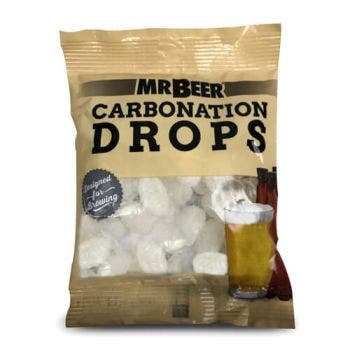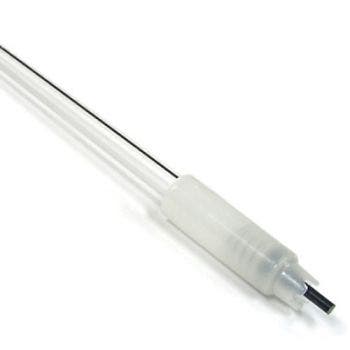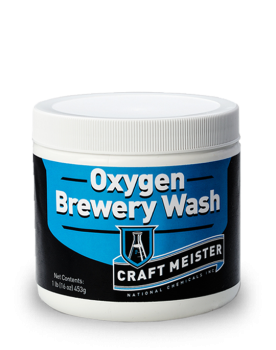IYKYK Tropical Stout
If you know you know, this tropic stout is about as amazing as it gets. We are being dead series here, full send, no cap. Okay, that's about all the new modern lingo that we know, but this stout is really amazing.
This is part of our limited release recipes. This stout features HS Sitiva Hops. The hop features ripe stone fruit, sweet floral, and soft peach flavors and aromas. It also has tropical fruit and lime character. Thus creating the perfect tropical stout.
We only have limited quantities of this hop available so get it while you can before it's gone forever!
WHAT YOU GET
1 Can St. Patrick's Irish Stout HME
1 Packet of Smooth DME
1 Packet of Robust LME
1 Packet of Lactose
1 Packet of Crystal 40 Malt
1 Packet of Oat Flakes
2 Packets of Sitiva hops
1 Packet S-04 yeast
3 hop sacks
1 Packet of No-Rinse Cleanser
FOR FANS OF
Tropical Stouts
BREW SPECS
Flavor: Balanced
Original Gravity: 1.056
Final Gravity: 1.017
ABV: 5%
SRM: (Color): 46
IBU: (Bitterness): 30
STEP 1: Sanitizing
Cleaning is one of the most important steps in brewing. It kills microscopic bacteria, wild yeast, and molds that may cause off-flavors in your beer. Make certain to clean all equipment that comes in contact with your beer by following the directions below:
1. Fill clean keg with warm water to line mark 1 on the back, then add ½ pack (about 1 tablespoon) of No-Rinse Cleanser and stir until dissolved. Once dissolved, the solution is ready to use. Save the remaining ½ of No-Rinse Cleanser because you will need it for bottling.
2. Screw on the lid and swirl the keg so that the cleaning solution makes contact with the entire interior of the keg, including the underside of the lid. Note that the ventilation notches under the lid may leak the solution. Allow to sit for at least 2 minutes and swirl again.
3. To clean the spigot, open it fully and allow the liquid to flow for 5 seconds, and then close.
4. Pour the rest of the solution from the keg into a large bowl. Place your spoon/whisk, can opener, and measuring cup into the bowl to keep them cleaned throughout the brewing process. Leave them immersed for at least 2 minutes in a cleaning solution prior to use.
5. After all, surfaces have been thoroughly cleaned, do not rinse or dry the keg or utensils. Return lid to the top of the keg, proceed immediately to brewing.
STEP 2: BREWING
Brewing beer is the process of combining a starch source (in this case, a malt brewing extract) with yeast. Once combined, the yeast eats the sugars in the malt, producing alcohol and carbon dioxide (CO2). This process is called fermentation.
1. Remove the yeast packet from under the lid of the can of Brewing Extract, then place the unopened can & LME in hot tap water.
2. Add all the grains into one of the muslin sacks and tie it closed so that the grain can flow freely within the sack. Set aside.
3. Add 8 cups of water to a 1 gallon or larger boil pot. Begin heating the water to a range of 155-160 degrees F and hold, at this range. Next, add the grain sack into the water, and maintain the 155-160 temp for 30 minutes.
4. While you wait, add one of the packets of HS Sitiva hops to the second hopsack and tie it closed so that the hops have room to expand and flow freely within the sack. Set aside.
5. After the 30-minute steep has completed, turn off the heat and remove the grain sack from the pot and place it into a colander to drain, allowing the runoff to flow back into the pot, and rinse the grain with one cup of hot water (around 160 degrees), letting the excess runoff flow back into your pot. DO NOT squeeze the grain sack. Once drained, discard the grain sack.
6. Bring grain water to a low, rolling boil. Once boiling, slowly sprinkle the DME into the boiling grain water and stir to dissolve. Continue stirring constantly to keep the rising foam in check. If it begins to rise, pull the pan off the heat, and lower the temperature slightly, continuing to stir (about 5 to 20 minutes depending on your conditions), until you hit the hot break which is where the foam has subsided, and the solution is now boiling.
7. Next, add in the lactose sugar and Robust LME, stir to combine.
8. Now add in the hop sack that you prepared earlier containing the one packet of HS-Sitiva hops to the boiling mixture and allow it to boil for 5 minutes.
9. After 5 minutes has passed, remove the pot from the heat and add in the can of St. Patrick’s Irish stout and stir to combine with a sanitized spoon. Remove the hop sack and discard.
10. Fill your fermenter with cold tap water to mark 1 on the back. If using any other fermenter this would be approximately 1 gallon of water.
11. Pour the wort into your fermenter, and then bring the volume of the fermenter to mark 2 by adding more cold water. (If you have a different fermenter top it off to 8.5 liters).
12. Stir your wort mixture vigorously with your sanitized spoon or whisk.
13. Sprinkle the S-04 Dry brewing yeast packet into the keg, and screw on the lid. Do not stir.
Put your fermenter in a location with a consistent temperature between 68° and 78° F, and out of direct sunlight. Ferment for 14 days.
STEP 3: Dry Hopping
Dry hopping is the process of adding hops to a beer which will impart more hop flavor and aroma to your beer.
1. On day 7 of your 14-day fermentation, sanitize the 3rd hopsack by boiling it in water for 30 seconds or by washing it in a no-rinse cleanser. Add the second packet of HS Sitiva hops to the clean sack and tie it so that the hops can flow freely within the sack. Quickly open the lid of your fermenter and add in the prepared cascade hopsack. Allow fermenting for 7 more days (14 total).
STEP 4: Bottling & Carbonating
After 14 days, taste a small sample to determine if the beer is fully fermented and ready to bottle. If it tastes like flat beer, it is ready. If it’s sweet, then it’s not ready. Let it ferment for 3 more days (17 total). At this point, it is time to bottle. Do not let it sit in the fermenter for longer than 24 days total.
1. When your beer is ready to bottle, fill a 1-gallon container with warm water, then add the remaining ½ pack of the No-Rinse Cleanser and stir until dissolved. Once dissolved, it is ready to use.
2. Distribute the cleaning solution equally among the bottles. Screw-on caps (or cover with a metal cap if using glass bottles) and shake bottles vigorously. Allow to sit 10 minutes, then shake the bottles again. Remove caps and empty all cleaning solutions into a large bowl. Use this solution to clean any other equipment you may be using for bottling. Do not rinse.
3. Add 2 Carbonation Drops to each 740-mL bottle. For 1-liter bottles, add 2 ½ drops; for ½-liter bottles add 1 drop. Alternatively, you can add table sugar using this table as a guide.
4. Holding the bottle at an angle, fill each bottle to about 2 inches from the bottle’s top.
5. Place caps on bottles, hand tighten, and gently turn the bottle over to check the bottle’s seal. It is not necessary to shake them.
6. Store the bottles upright and out of direct sunlight in a location with a consistent temperature between 70°-76°F or 21°-24°C. Allow sitting for a minimum of 14 days. If the temperature is cooler than suggested it may take an additional week to reach full carbonation.
Tip from our Brewmasters
After the primary carbonation has taken place your beer is ready to drink. We recommend putting 1 bottle in the refrigerator at first for 48 hrs. After 48hrs. give it a try and if it is up to your liking put the rest of your beer in the fridge. If it does not taste quite right, leave the bottles out at room temp for another week or so. Keep following this method until your brew tastes just how you like it.
This process is called conditioning and during this time the yeast left in your beer can help clean up any off-flavors. Almost everything gets a little better with time and so will your beer.






